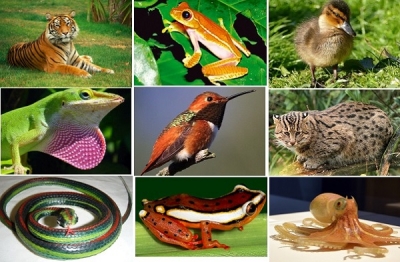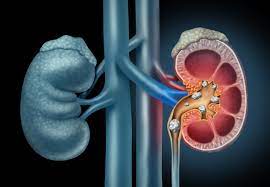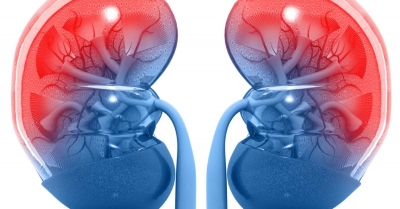What is Animal Kingdom?

ANIMAL KINGDOM
All living things fall into one of five categories, or “kingdoms” — bacteria and protists (single-celled organisms), fungi, plants, and animals. The animal kingdom is made up of many groups of invertebrates (animals without backbones, such as insects) and a few groups of vertebrates, such as mammals. They all share the ability to move and sense their surroundings, and the need to find food.
- INSECTS Small animals with hard external skeletons, all insects have six legs when adult and, in most cases, two pairs of wings. They include creatures such as butterflies, wasps, flies, and beetles. Many are very attractive, but some can sting, bite, and carry deadly diseases.
- WORMS There are many types of worms. They include tapeworms, which live inside other animals, flatworms, and roundworms. Most familiar are segmented worms like the earthworms that burrow in soil, marine worms that live on tidal shores, and leeches.
- AMPHIBIANS Soft-skinned amphibians, such as frogs and toads, lose body moisture easily. To avoid drying out, nearly all frogs live in damp places, often near a pond. Most lay their eggs in water or other damp places, and this hatch into fish-like young, such as tadpoles.
- BIRDS These highly specialized, warm-blooded vertebrates are superbly equipped for flight, and some may stay airborne for most of their lives. They are the only animals with feathers, which stop them losing body heat, enable them to fly, and are often brightly coloured.
- MAMMALS Like birds, mammals are warm-blooded, meaning they can control their body temperature. The females feed their young on milk. Most eat plants, but some, such as lions, are meat eaters. Humans belong to the mammal group.
- ARACHNIDS The spiders, scorpions, ticks, and their relatives are eight-legged invertebrates with hard external skeletons but no wings. Spiders kill their prey with venomous fangs, and scorpions have stings in their tails, some of which are powerful enough to kill a human.
- MOLLUSCS Most molluscs are soft-bodied animals that live in water and have protective shells. They include mussels, clams, and whelks. The only molluscs able to live on land are the snails and slugs. Octopuses and squids are also molluscs, but they are highly evolved, with well-developed brains and eyes.
- CRUSTACEANS Like insects, crustaceans have hard external skeletons with several segments, and strong jointed legs. All are aquatic, apart from woodlice. They include tough-shelled animals like crabs and lobsters, as well as more delicate shrimps and water fleas.
- MIRIAPODS Named for their many legs, miriapods have long bodies divided into segments. Centipedes have a single pair of legs on each segment, while millipedes have two pairs. Some millipedes have more than 90 segments, and more than 180 pairs of legs. Millipedes eat mainly dead material, but centipedes are speedy hunters.
- FISH Fish were the first vertebrates, and the ancestors of all amphibians, reptiles, mammals, and birds. They are perfectly adapted for life in water, which supports their bodies and provides them with vital oxygen. There are two main fish groups: those with bony skeletons, and the sharks and rays, which have skeletons of flexible cartilage.
- ECHINODERMS Sea urchins, starfish, feather stars, and sea cucumbers are echinoderms, meaning “spiny skinned”. Their bodies tend to be wheel-shaped, with a central mouth. Feather stars trap food that floats through their feathery arms, but most searches for food on the seabed.
- REPTILES Although cold-blooded like amphibians, reptiles such as snakes and lizards have waterproof, scaly skins that allow them to live in dry places such as deserts. Most are active hunters, and some snakes have powerful venom, which they use to kill their prey and for defence, if threatened.
Picture Credit : Google

